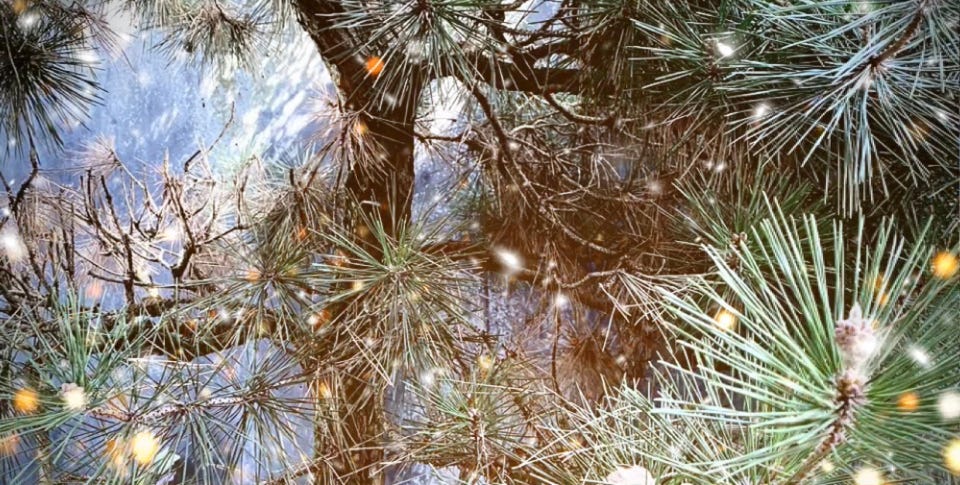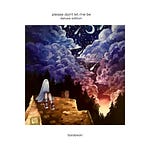Hello! Welcome to the Dance Cry Dance Break, an audio magazine showcasing new music from the artists of Dance Cry Dance Records alongside stories and essays inspired by the songs, written by some of our favorite authors.
Join us for our first episode, an exploration of solitude, community, and the places we live. Enjoy the Break!
Today’s show features Softly, to the Night, the new EP from Dance Cry Dance Records artist Tiny Tiny, written, produced and recorded by Boone Williams. Mastered by Austin Leeds. Before that, “Wait”, a short story inspired by the album, written and read by Natalie Bayne.
The Dance Cry Dance Break is produced and recorded by Natalie Bayne and Moe Provencher. Our stories are edited by Timaree Marston.
Theme music is Red Lines, also by Tiny Tiny.
A transcript of today’s story can be found below.
Dance Cry Dance is a collective record label in Seattle, WA. Paid subscriptions support our artists and writers.
Wait
By Natalie Bayne
At the beginning, when the weather was still cold, she never went outside. And, no one else really did either. Once or twice a week, she’d catch a glimpse of the mail carrier, sack slung heavy over one shoulder, trail of glittering dust floating and swirling in the air around him, drifting along behind him as he trudged up the hill. She’d watch him, through the window, as he stuffed handfuls of newsprint ads into the mailbox beside the front gate, hiked the sack up onto his shoulder again, and made his way further up the hill, stopping at each house as he went.
She liked to count the seconds from his first step, the time it took for the glittering cloud he left in his wake to dissipate, sometimes carried away quickly by the wind, other times, on stormier days, brought to ground in an instant by the falling rain. Sometimes, on still days, the dust would linger for hours, billows of glistening specks, hovering midair, slowly turning in the icy sunlight. On those days, she didn’t count, but turned away from the window, withdrawing further into her home.
As the air grew warmer, neighbors began to reappear, one by one. And day by day, their sparkling clouds grew smaller and smaller until she rarely saw them anymore. And, one day, she decided it was time to come outside. Cautious at first, just a few steps at a time, she made her way into the yard. And then further back into the garden. She’d never had much luck with the flowers or vegetables but was fond of tending to the trees. And, there were several that needed tending. She fetched a rusted pair of lopping shears from the old shed at the back of the house and went to work on the overgrown camellia, pruning away the dead branches, shaking loose the rotting blossoms, and trimming the fresh growth into the tight, plump shape of a shrub.
She examined a young ginkgo. It had been transplanted to a brighter corner of the garden last summer and had promptly dropped all of its leaves in protest. At the time she’d thought perhaps it would die. But ginkgos, she knew, were hardy trees. She looked closely and, sure enough, tiny green buds had begun to sprout along its spindly, gray branches. She smiled and thought how wonderful it would be to see that burst of sunshine gold again from her window when the leaves changed color in the fall. She had missed it so dearly, all those cold days inside last year.
She moved around to the side of the house where a rock garden lay in the shade of the gnarled old pine tree. Hundreds of tiny weeds, encouraged by the spring rain, had peeked up between the jagged white shards of crushed granite that covered the ground alongside the fence separating her yard from her neighbor’s. She knelt on a paving stone, gripped a tiny plant by the leaves, and plucked it from the ground. The leaves snapped off at the stem. She tossed them into a pail and brushed aside the rocks where the weed had been. A bit of green stem stuck out of the ground beneath. She picked at it with a fingernail but couldn’t get a firm hold on it again. She sighed and swept the rocks back into place covering the little stub of stem. She grasped another plant, this time more gently, between her thumb and forefinger. She wiggled it lightly and felt the plant give, jiggled a bit more, slowly and carefully loosening the soil from the roots until the whole plant was free. She held it up, examining it with satisfaction, barely half an inch of green with a branching network of roots, ten times its length and fine as silk thread. She tossed the plant whole into the pail and went after the next with the same determined delicacy. She spent that afternoon and the following clearing the weeds. And at night, as she slept, she dreamt of the root still in the ground below the broken stem that she could never get hold of.
By the third day, the weeds had all been plucked and the old pine stood in the center of a flawless field of white. The tree had been beautiful once, was still, beneath dry needles the color of rust that lay in heaps at its base and in clumps between criss-crossing branches, obscuring an elegant trunk painstakingly trained to grow in a spiral pattern, covering graceful branches that radiated from its center, each tipped with thick, tufted brushes of deep green. She cleared the dead needles from the ground and from the crooks of the branches, scooping them into the pail with gloved hands, humming to herself as she carried away load after load, admiring the shape of the tree as it came into focus.
She noticed then the buds, slender, pale green fingers pointing skyward in clusters at the end of each branch. At the center of each cluster, one bud stood taller than the others: the terminal bud. If left alone, it would grow vertically into a full branch, distorting the pine’s symmetry. But, if removed early enough, the other, smaller buds would grow, forming a soft pad, a tight cluster of branches, thick with bright new needles.
She held a bud between gloved fingers, it’s translucent skin, an intersecting pattern of scales, feathering and peeling at the tips. The bud was supple, flexible. She snapped it off at the base with little effort. A puff of yellow pollen burst from the cone buds below. She brushed it from her sleeve.
She heard footsteps on the other side of the fence and then a voice.
“Mornin’,” the voice said.
A neighbor stepped from behind a laurel bush and leaned over the fence. He had a handkerchief tied around his face and a shovel in one hand.
“Beautiful day, isn’t it?”
It was, she agreed.
“Working’ on that old pine, huh?”
She nodded and reached for another bud.
“It’s a little overgrown,” he said, “but solid. It’ll shape up. Japanese black pine, right?”
She nodded again.
“Yeah, I thought so. You mind?”
He didn’t wait for a reply but leaned over the low wood fence and reached for the tree, breaking off a couple of the long, dark needles and crushing them between his fingers. He pulled the handkerchief down below his chin, held the broken needles to his nose, and took a deep breath.
“Mmm, that smell,” he said. “Did you know that in Japanese the word for pine tree is the same as the word for “wait”?
“Hmm,” she raised her eyebrows in feigned interest, aware he wasn’t really asking if she knew, just talking in that absent way particular to neighbors, the common language of familiar strangers.
“Makes sense I suppose. Trees don’t have much else to do but wait.” He laughed and a little puff of glitter burst from his mouth. He didn’t notice it or lift the handkerchief over his face to contain it.
She took a step back, her breath caught in her chest.
“You know, you’re gonna have a hard time reaching those buds up there at the top,” he said. “You got a ladder?”
She shook her head “no,” still holding her breath.
“Let me run and get mine. You can borrow it for a couple days.“
She smiled and took another small step backward. He disappeared behind the laurel again, and she turned and walked quickly back to her house, holding her breath until she was behind the closed door.
That evening, she typed the words “pine tree ” and “English to Japanese translation” into a browser window.
Matsu, the result read.
Noun: pine tree.
Verb: to wait, to look forward to, to anticipate.
She rubbed the inside of her wrists. Each had a thin band of red pinprick spots, skin swollen and sore where the pine needles had poked between the gloves and long sleeves she’d worn earlier that day. She stood and looked out her bedroom window. The neighbor had left the ladder there, leaning against the fence beside the pine tree.
It would have to wait.
















Break 001 - Wait/Softly, to the Night